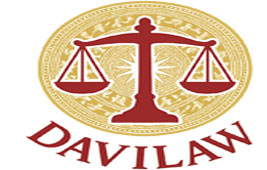What should I do if the land is not named in the cadastral map?
1. What is a cadastral map:
Pursuant to Clause 4, Article 3 of the 2013 Land Law, cadastral maps are maps intended to show information about land plots and related geographical elements, prepared according to administrative units of communes, localities and towns. , confirmed by competent state agencies.
Cadastral maps are made at scales of 1:200, 1:500, 1:1000, 1:2000, 1:5000 and 1:10000; on the projection plane, in the 3-degree projection zone, axis meridians for each province and centrally run city, reference system and national coordinate system VN-2000 and current national altitude system.
A cadastral map is a specialized map in the land field that accurately shows the boundary location, area and some cadastral information of each plot of land or land. In addition, the cadastral map also shows other geographical elements related to land established according to the basic administrative units of communes, wards, towns and unified throughout the country.
The cadastral map records land information as follows:
– Map frame.
– National coordinate and elevation control points of all levels, cadastral points, field photo control points, measurement control points with stable landmarks.
– Planning boundary markers.
- Outline the safety protection corridors for traffic, irrigation, dykes, electrical conduction systems and other public works with safety protection corridors.
– Administrative boundary markers, administrative boundary lines at all levels.
– Land plot boundaries, land type, land plot number, land plot area.
– Objects occupying land that do not constitute land plots such as roads, irrigation works, dykes, rivers, streams, canals, canals and other elements of land occupation along lines.
– Housing and other construction works: show on the map the main construction works suitable for the use purpose of the land plot, except temporary construction works.
– Land shape or elevation notes.
– Objects occupying land that do not constitute land plots such as roads, irrigation works, dykes, rivers, streams, canals, canals and other elements of land occupation along lines.
– Explanatory notes.
2. What should I do if the land is not named in the cadastral map?
In fact, cadastral maps record information about the land plot as well as factors related to that land plot.
If the land is not named in the cadastral map, according to the provisions of Clause 3, Article 77 of Decree No. 43/2014/ND-CP, people can apply for additional information.land plot on the cadastral map.
At that time, the land registration office is responsible for checking the records; Extract the cadastral map or extract the cadastral measurement of the land plot in cases where there is no cadastral map and the cadastral measurement of the land plot has not been extracted.
3. Instructions for checking land information:
Step 1: Submit:
Individuals and organizations that need to look up land information will make a Request Form or Written Request to look up land information.
Step 2: Submit:
After completing the application, organizations and individuals wishing to exploit land data submit a Request Form or send a written request to the Land Registration Office.
If there is a need, submit the application to the People's Committee of the commune or ward where the land is located.
Step 3: Receive requests and resolve:
Land data providers provide data to organizations and individuals requesting data exploitation after receiving valid request forms and written requests from organizations and individuals.
Civil servants receive, process and notify financial obligations (in cases where financial obligations must be fulfilled) to organizations and individuals.
In case of refusal to provide land information, a written response must be made clearly stating the reason.
Step 4:Complete and return results:
Land data providers provide land data upon request after organizations and individuals have fulfilled their financial obligations according to regulations.
Resolution time is specified as follows:
– Information must be provided on the same day if the request is received before 3:00 p.m. (3:00 p.m.).
– Providing land data is done on the next working day if the request is received after 15:00.
– The time limit for providing land data is determined by the agreement between the land data provider and the requester in the form of a contract in case there is a request to provide land data in aggregate form. information combination.
Note: The above time does not include the time to receive documents and return results at the commune-level document receiving agency; and days off and holidays as prescribed by law as well as implementation timefinancial obligations of land users, time for consideration and handling in cases of land use that violates the law, time for soliciting appraisals.
If there are cases where data mining needs to be synthesized and processed before providing it to organizations or individuals, it must be done in the form of a contract according to the provisions of the Civil Code between the data providing agency. land and organizations and individuals wishing to exploit data.
LEGAL DOCUMENTS USED IN THE ARTICLE:
Land Law 2013.
Decree No. 43/2014/ND-CP details the implementation of a number of articles of the land law.
Circular No. 25/2014/TT-BTNMT regulates cadastral maps.
Circular No. 34/2014/ND-CP regulating the construction, management and exploitation of land information systems.









